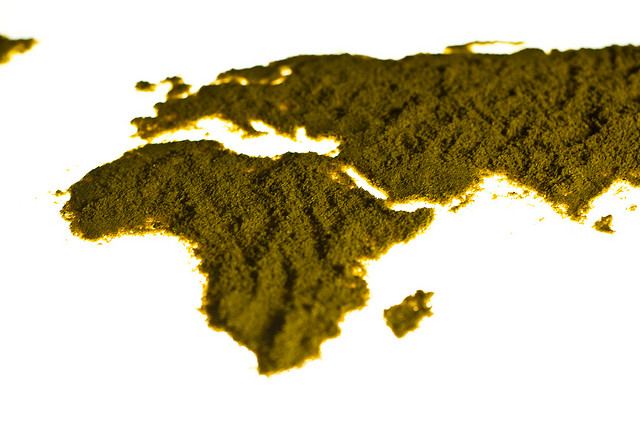Most of the developing countries have vast reserves of natural resources. Imagine if Africans could utilize the metals that are found in the neighboring mines and make a Smartphone or a tablet. This application could be from shoes to toilets and from guns to houses, all could be designed, printed and then sold by Africans to Africans and worldwide. This would not only boost the economy but also expose Africans products to the international market.
3D printing came into existence back in 1980s as an alternative for the creation of proto-types in various industries but now the scenario has changed completely. Now this technology has found its application in a wide range of industries such as construction, architecture, industrial design, automotive industry, aerospace, engineering, military, medical industry, fashion, footwear, jewelry, art, education, food etc. The list is never ending with each passing day this technology seems to seep deep into our lives. The worldwide shipment of 3D printers is expected to rise from 22, 542 in 2012 to 283,435 in 2017.
After the overwhelming response of Africans to adapting to newer technologies, 3D printing is being accepted with open arms. With this acceptance a whole new world filled with new opportunities opened up for the African. This stimulated a spirit of entrepreneurship and innovation among the masses. As the mobile and the internet technology is penetrating into the continent, it is creating a lot of awareness among the people about the latest technological advancements in the world. 3D printing is one such technology that is slowly but steadily gaining grounds in the Dark Continent.
For a country like Africa where the manufacturing industry hasn’t fully developed the implementation of 3D printing in the manufacturing sector would be much easier as compared to other countries where the manufacturing process is quite mature. So, since Africa does not actually have a manufacturing industry as industrialization is not present in the continent, the application of 3D printing will be best suited here than anywhere else.
Many companies are stepping forward to help Africa come to contact with this technology. one such organization is Pirate3D, which wants to democratize innovation, foster creativity, and facilitate entrepreneurship in the local communities of Africa. The company has taken part in the Kickstarter with a goal of US$500 000 upon successful completion of this the 3D printing company plans to donate 10 units of the Buccaneer 3D printer and also will conduct training camps to educate people about this technology, designs and apps to selected African institutions. The company wishes to bring the potential and power of 3D printing among the youth of Africa and equip them with the latest tool for creativity and innovation. This effort made by the company falls under the CSR division of the company along with Professor Calestous Juma of Harvard University.
This technology would successfully replace the problem of middleman in Africa and give additional profits to the entrepreneurs. Selling raw materials would not fetch the big bucks for the country but if finished goods are sold then the money that is earned is far more than selling raw materials. Instead of outsourcing its manufacturing industry if Africa could keep those billions to run the local economy and sift though then it would boost the economy of the continent with leaps and bounds.
Most of the 3D printed innovations are open sources which mean that the ideas are open to all and can be built upon. This also means that an idea that was conceived by someone in Japan could be built by someone in the Kalahari! In Togo, the W. Afate 3D printer has already started to spark conversation about the West African’s innovation ambitions.
Hopefully these new concepts would change the economy and the working of the Dark Continent!
Image Credit: eelke (flickr handle: eelkedekker)
